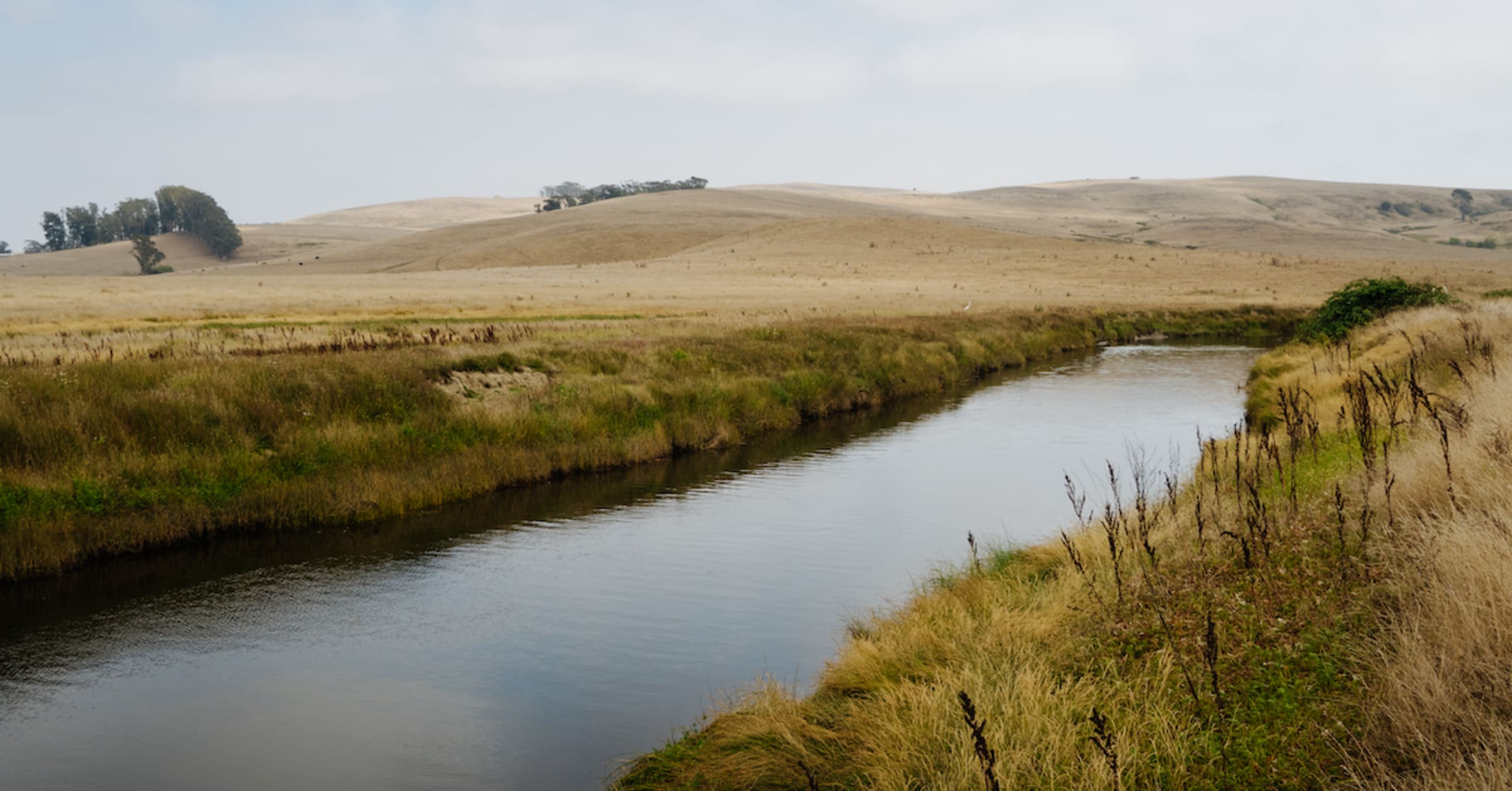This Marin County Farm Offers a Fresh Take on Back-to-Nature Food and Camping


Photos by wildlife biologist and photographer Jason Fitzgibbon
Surrounded by grassy hills and a seasonal marsh, Estero San Antonio Wonderland is 800 acres of agro-ecological farm and idyllic campsites—all cared for by Guido and Emily, who firmly believe that wilderness and food production can coexist.
On any given day at Estero San Antonio Wonderland, visitors can spot a number of migratory and resident nesting birds while kicking back at their campsite. The Northern California property is peaceful and quiet, save for the cattle at distant neighboring farms.
When ecologist Jason Fitzgibbon visited for a land assessment, he recorded dozens of these bird species—great egrets and great blue herons, red-tailed hawks and Swainson’s hawks, morning doves, great-horned owls, and American kestrels, as well as sparrows, finches, and jays.
“For the lack of trees, I was amazed at the number of birds,” he said.
The lay of the land
Bordered by the Estero San Antonio watershed to the east, south, and west, the property spans 800 acres. Hipcamp Hosts Guido and Emily now steward the space, running the family-owned, agro-ecological True Grass Farms and offering tent camping. Visitors can buy grassland beef, lamb, eggs, and vegetables grown here, as well as homemade focaccia, sourdough bread, and local cheeses, then stay overnight at one of six campsites overlooking the estuary, all named for nesting birds, with access to trails and kayaks.
“Camping doesn’t have to be just getting out of dodge,” Guido says. “Camping can literally be the experience of, or participating in, an ecosystem that is quite different from the metropolis.”
Taking flight
Birdwatchers often make their way to Estero San Antonio Wonderland, but Jason found that with additional ecological restoration, there’s the possibility of an even more diverse ecosystem.
During his survey, he noted that the property has the potential to support a variety of birds he didn’t observe, particularly during migrations in fall, winter, and spring. Notable species that could inhabit the space include migrating waterfowl, shorebirds, and raptor species, plus prairie falcons, bald eagles, and ferruginous hawks.
Native learnings
Ecological restoration is equally important to Indigenous people who rely on natural resources for their well-being. Along with the ecological assessment, Guido and Emily also chatted with Traditional Ecological Knowledge (TEK) expert Dr. Len Necefer about their existing efforts to reconnect the land and ecosystems to native communities.
“It’s important for people to understand the land under them, to acknowledge the history, and understand why much of the traditions are gone,” Len says. “Northern California is an incredibly rich and diverse place—the Indigenous people who lived in this part of the world actually never developed any large-scale agriculture practice in large part because the land was so productive.”
The Estero San Antonio property was once heavily grazed by cattle, but now Guido and Emily are actively working to restore ecological function through a partnership with the local Coast Miwok tribe. After gaining the tribe’s input, Guido and Emily set a conservation goal to diversify the habitat by reintroducing 20 to 30 native species. And they have already started restoration efforts by planting oaks on the hills and shrubs, perennial flowers, and trees on riverbanks. They’re also replanting native plants like currants and elderberries around the campsites.
Living the land
Ultimately, Emily and Guido are continuing to create opportunities for others to experience, learn from, and get inspired by their space. Visitors can gain a better understanding of the area’s history and wildlife behavior, while forming a connection to the environment and learning about sustainable agriculture.
“Wilderness and food production coexisting has been fundamental in this process,” Guido says. “When someone can actually come out and enjoy wildlife while eating from the place, tasting the grass, there is an attitude change.”
RVSP for free farmstay campouts with Hipcamp & REI this summer
Hipcamp and REI Co-Op have teamed up for the Summer of Magic, a series of free campouts and outdoor experiences hosted all summer long. This round, we’re celebrating farms and ranches with fresh and local feasts at hundreds of award-winning Hipcamp farmstays across the US—just like Estero San Antonio Wonderland. For your chance at an invite to exclusive private chef meals, free Hipcash, farm-fresh eggs, and more, just say yes to magic.
Recent Posts
These Are the Top Trending RV Destinations for Summer 2024
Want to know where fellow RVers are camping this summer? We looked at Hipcamp search data to name the most…
Beyond Honey Bees: How Wild Bees Contribute to Your Outdoor Experiences
Although honey bees tend to get most of the love, North America is home to over 3,600 various bee species.…
Hipcamp Awards 2024: Best Glamping Sites in the US
To help you find the best camping in the country, each year we compile data from bookings, reviews, and ratings…
Hipcamp Awards 2024: Best Glamping Sites in Canada
To help you find the best camping in the country, each year we compile data from bookings, reviews, and ratings…
Hipcamp Awards 2024: Best Glamping Sites in Australia
Awards season has arrived! To help you find the best camping in the country, each year we compile data from…
Hipcamp Awards 2024: Best Glamping Sites in the UK
To help you find the best camping in the country, each year we compile data from bookings, reviews, and ratings…